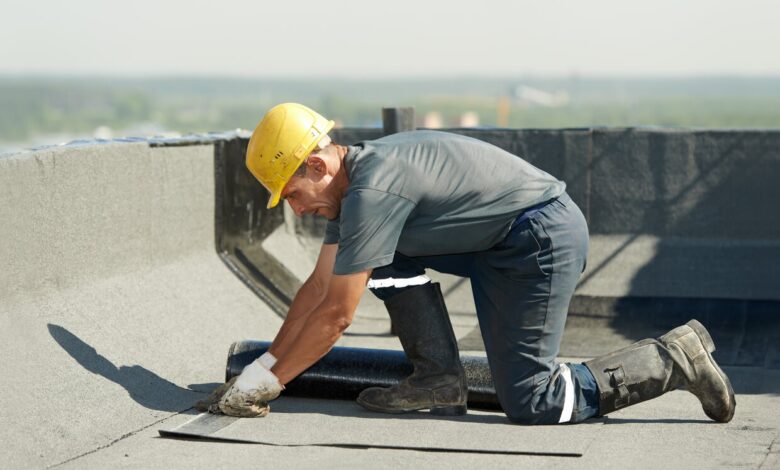What to Expect During a Commercial Roof Installation for New Construction

Introduction
Embarking on a new commercial construction project is an exciting venture, but it requires a thorough understanding of various components, such as roofing. The roof of a commercial building is one of its most essential structural elements, protecting the interior from the elements and ensuring the comfort and safety of its occupants. With the complexities involved in commercial roof installations, knowing what to expect during each phase of this process is vital.
Planning and Preparation
The planning and preparation stage is crucial for a successful roof installation. This phase often begins with extensive consultations between building owners, architects, and general contractors. Detailed blueprints and specifications are crafted during this stage to ensure all stakeholders align with the project’s objectives and expectations. Such plans provide a comprehensive roadmap that outlines the project’s scope, timeline, and budget.
Protective measures are discussed to safeguard the structure and minimize disruptions during construction. It’s essential to consider environmental factors and potential weather conditions, as these can significantly impact scheduling and the selection of roofing materials. Preparation is the foundation for a successful installation, setting the stage for a smooth process that aligns with the planned timeline and quality standards.
Material Selection
Choosing the right materials is a critical step in a commercial roof installation. Different materials offer various benefits, including durability, energy efficiency, and aesthetics. The selection process typically involves evaluating local climate, budget constraints, building design, and long-term maintenance needs. Popular materials include metal, modified bitumen, and single-ply membranes, each offering unique characteristics suitable for different project goals.
Decision-makers must weigh the short-term and long-term implications of their material choices. For instance, while some materials may present a higher upfront cost, they could offer savings on energy and maintenance over time. Understanding these trade-offs allows for more informed decisions, reflecting cost-effectiveness and quality. To learn more about these materials and their applications, experts often encourage stakeholders to get the info that aligns with their specific project needs.
Site Preparation
Site preparation involves readying the construction zone for the upcoming installation activities. This phase includes clearing debris, securing the area, and setting up any necessary scaffolding or safety barriers. Ensuring a safe and organized work environment minimizes risks and paves the way for an efficient installation process.
Technical inspections and assessments are often conducted to verify that the site complies with local building codes and safety regulations. This step is essential to prevent delays or unforeseen complications once installation begins. Proper site preparation reflects a commitment to safety and quality, ensuring the work proceeds smoothly and adheres to established standards.
The Installation Process
The installation process itself is a meticulous endeavor that requires skill and precision. It commences with applying waterproofing layers to serve as a base for the roofing material. Ensuring these layers are applied correctly is critical as they form the primary barrier against moisture and weather elements. Subsequently, the roofing materials are installed according to the project specifications, using specific techniques and equipment to secure them.
Special attention is paid to areas that may be more vulnerable to leaks or weather damage. Flashing, for instance, is carefully installed around roof penetrations to bolster the structure’s integrity. The installation team works efficiently to align with the project’s timeline while maintaining high standards of craftsmanship and safety. Communication remains key throughout every stage, with regular updates ensuring that all team members are informed and issues are addressed promptly.
Post-Installation Inspections
Following the completion of the installation, rigorous post-installation inspections are conducted. These evaluations confirm that the roof has been installed correctly and meets the predefined quality and safety standards. Inspectors assess various components, such as alignment, sealing, and overall artistry, to identify potential issues that must be addressed before the project is finalized.
Such inspections are not merely procedural but are integral to verifying the installation’s success and longevity. Addressing discrepancies ensures the structure is sound and ready for occupancy, providing peace of mind for building owners and tenants alike. It is also an opportunity to evaluate the roof’s adherence to warranty terms, offering further assurance of its expected performance and reliability over time.
Conclusion
Navigating the commercial roof installation process involves careful planning, precise execution, and thorough inspection. By understanding each phase, from planning and material selection to the actual installation and inspections, stakeholders can ensure the smooth execution of their project. This knowledge fosters confidence, enabling building owners to make informed decisions aligning with their financial and functional goals. A well-installed roof protects the building and enhances its value and appeal, contributing to the overall success of the new construction.




